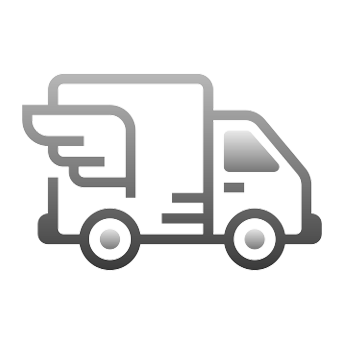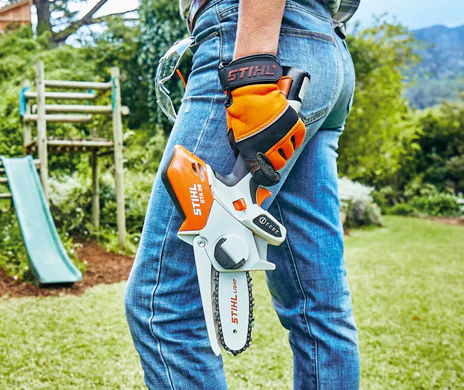Save $200

Toro Timecutter MX5400 54" Zero-Turn Ride On Mower
SKU: 77520TA
Low Doc Finance Available. Calculate Your Repayments Here.
Interest FREE Up to 36 Months*
Select Humm90 at Checkout
The Toro TimeCutter MX5400 54" Zero-Turn Ride On Mower is a powerful and durable lawn mower that guarantees professional performance and precise grass cutting. With its heavy-duty IronForged deck, traction-happy tyres, and easy maintenance, you'll have the edge to conquer any lawn. Plus, enjoy a comfortable ride with the plush, gaming-style seat. Trust over a century of pro-level engineering to get the job done right.
The Toro Timecutter MX5400 is a 54" zero-turn ride on mower powered by a reliable Kawasaki V-Twin 23HP engine. With a 54" fabricated cutting deck and 4 chains for a "floating deck" feature, this professional mower makes maintenance a breeze and ensures efficient cutting. Experience the power and ease of the Toro Timecutter today.
The Toro Timecutter MX5400 54" Zero-Turn Ride On Mower offers a smooth and effortless lawn cutting experience with its foot assisted deck lift and easy height adjustment control. Increase efficiency and precision with this user-friendly mower.

Price Match Guarantee
If you find a lower price on the Toro Timecutter MX5400 54" Zero-Turn Ride On Mower we will match it.

Free Assembly & Premium Handover
We’ll unbox, assemble and tune most garden power equipment orders, plus show you how everything works.*

Extra Savings with Click n Collect
Simply choose to pickup your Toro Timecutter MX5400 54" Zero-Turn Ride On Mower at one of our five Sydney stores to unlock extra discounts.*

Fast & Free Delivery Across Sydney
We dispatch orders fast and offer free shipping on orders over $1,000 to Sydney metro addresses.*


Buy Now, Pay Later Up to $1,000
Choose Zip Pay at checkout for up to $1,000 interest-free and make repayments weekly, fortnightly or monthly.*


Interest-Free Finance Up to $30,000
Choose Zip Money at checkout for up to $30,000 and up to 60 months interest free for those bigger buys.*
| Engine | |
|---|---|
Brand The manufacturer of the engine, influencing reliability, power, and availability of spare parts.
|
|
Model The specific engine series, indicating design, intended usage, and compatibility with different mower types. Some series are built for residential use, while others are suited for commercial applications.
|
|
Engine Type The configuration of the engine, such as single-cylinder for fuel efficiency or V-Twin for smoother operation and more power.
|
|
Power Output Measured in horsepower (HP), this determines how effectively the mower can handle thick grass, slopes, and demanding mowing conditions.
|
|
Displacement The engine size, measured in cubic centimeters (cc), influences power, fuel efficiency, and performance. Larger displacement engines typically offer more torque for challenging terrain.
|
|
Fuel Type The type of fuel the engine uses: Petrol (common for residential models), Diesel (better for commercial use), or Electric (eco-friendly and low maintenance).
|
|
Fuel Tank Capacity The amount of fuel the mower can hold, affecting how long it can run before needing a refill. Larger tanks are beneficial for covering large areas without interruptions.
|
|
Fuel Delivery Determines how fuel is supplied to the engine. Carbureted engines are simpler and easier to maintain, while fuel-injected engines offer better fuel efficiency and smoother operation.
|
|
Starting System The method used to start the engine. Common types include key start, push-button start, and manual pull start. Electric starters offer greater convenience.
|
|
Lubrication The system that keeps engine parts moving smoothly and reduces wear. Some engines use splash lubrication, while others use pressurized lubrication for better oil distribution.
|
|
Air Filtration System The filter type that prevents dirt and debris from entering the engine. Cyclonic or dual-stage filters offer better protection for dusty environments.
|
|
| Drive System | |
Transmission Type Dictates how power is transferred from the engine to the wheels. Options include manual, automatic, and hydrostatic transmissions, with hydrostatic being the smoothest and easiest to control.
|
|
Drive System Controls how the mower moves: Rear-wheel drive for good traction, all-wheel drive for challenging terrain, or four-wheel drive for maximum grip on slopes.
|
|
Forward Speed The maximum speed the mower can travel forward. Faster speeds allow for quicker mowing, but control and terrain should be considered.
|
|
Reverse Speed The top speed when moving in reverse. A higher reverse speed improves maneuverability, especially in tight spaces.
|
|
Drive Control The steering and movement system. Common types include pedal-operated hydrostatic control, lap bars for zero-turn mowers, and manual gear shifting.
|
|
Cruise Control A feature that maintains a consistent speed without holding down the accelerator, reducing fatigue on large properties.
|
|
Differential Lock A feature that locks the rear wheels together for better traction on uneven or slippery terrain.
|
|
| Cutting System | |
Cutting Width The total width of grass cut in a single pass. A wider cutting width reduces mowing time but requires more open space to maneuver.
|
|
Block Size Recommended Block size that this Mower is best suited for, providing optimal performance and efficiency.
|
|
Number of Blades More blades generally provide a finer cut and better grass dispersion. Mowers with multiple blades cover more ground efficiently.
|
|
Blade Tip Speed Blade tip speed is the measure of how fast the outer edge of your mower’s blade travels as it spins. In ride-on lawnmowers. A higher blade tip speed means the blades slice through grass more quickly, resulting in a cleaner, more uniform cut.
|
|
Cutting Deck Construction Refers to the material and design of the mower deck. Fabricated steel decks are more durable than stamped steel and provide better resistance to impacts.
|
|
Cutting Deck Thickness Refers to the gauge or thickness of the steel used in the mower's cutting deck. A thicker deck (lower gauge number) provides greater durability, resistance to impacts, and longer lifespan, making it ideal for heavy-duty use.
|
|
Cutting Height Range The range of heights at which the mower can cut grass. Adjustable cutting heights allow for different lawn types and seasonal mowing needs.
|
|
Blade Engagement The mechanism used to activate the blades. Manual engagement requires a lever, while electric PTO (Power Take-Off) engagement allows for smoother operation with the push of a button.
|
|
Deck Lift System The method used to raise or lower the cutting deck. Some mowers use manual levers, while others offer foot-operated or electric deck adjustments for ease of use.
|
|
Anti-Scalp Wheels Small wheels attached to the deck to prevent scalping on uneven ground.
|
|
Side Discharge Expels grass clippings out the side of the mower for quick disposal.
|
|
Rear Discharge Expels clippings behind the mower, useful for commercial or municipal applications.
|
|
Mulching Capability Allows the mower to finely chop grass clippings and return them to the lawn as natural fertilizer, reducing the need for bagging.
|
|
Bagging System Compatibility Indicates whether a grass catcher can be attached to collect clippings for disposal or composting.
|
|
| Steering & Handling | |
Steering Type Defines how the mower is maneuvered. Options include traditional steering wheels, lap bars for zero-turn models, and joystick controls for advanced handling.
|
|
Turning Radius The amount of space needed for a complete turn. A zero-turn mower can rotate 360° in place, making it ideal for navigating around obstacles.
|
|
Maximum Slope Capability Refers to steepest incline a mower can safely operate on while maintaining stability and traction. Measured in degrees this factor is crucial for hilly or uneven terrain. Operating a mower beyond its slope capacity can lead to loss of control or rollover.
|
|
Front Tires Affect steering responsiveness and stability. Larger front tires improve maneuverability, while textured tread patterns provide better traction.
|
|
Rear Tires Play a key role in traction and support. Larger rear tires improve grip, reduce turf damage, and provide better stability on slopes.
|
|
| Comfort & Convenience | |
Seat Type Determines operator comfort during long mowing sessions. High-back and cushioned seats provide more support than basic seats.
|
|
Armrests Armrests provide extra comfort for long mowing hours.
|
|
Cup Holder A small but handy feature for holding drinks while mowing.
|
|
USB Charging Port Allows charging of mobile devices while operating the mower.
|
|
Hour Meter Tracks total engine runtime, useful for maintenance scheduling.
|
|
| Build & Durability | |
Frame Construction The strength and material of the mower’s main body. Welded steel frames offer greater durability compared to bolted frames.
|
|
Warranty The manufacturer’s warranty period, which may vary for different parts of the mower.
|
|
Country of Manufacture Indicates where the product is designed and built.
|
|
| Safety Features | |
Rollover Protection System A protective bar that reduces rollover risks, commonly found on commercial mowers.
|
|
Seat Safety Switch A feature that automatically shuts off the engine if the operator leaves the seat.
|
|
Reverse Mowing Safety Prevents the blades from cutting while the mower is in reverse, unless overridden.
|
|
Parking Brake Locks the mower in place when parked, preventing unintended movement on slopes or uneven terrain.
|
|
Operator Presence System A safety feature that shuts off the engine or blades if the operator leaves the seat, preventing accidents.
|
|
| Dimensions & Weight | |
Weight The total weight of the mower, which affects stability, handling, and transport. Heavier mowers provide more traction but may require a trailer for transport.
|
|
Overall Dimensions The mower’s full size, helping determine if it fits in a shed or trailer.
|
|
| Additional Features | |
Tow Hitch Allows the mower to pull carts, spreaders, aerators, and trailers.
|
|
Attachments Available Additional tools that enhance mower functionality.
|
|
| Engine | |
|---|---|
Brand The manufacturer of the engine, influencing reliability, power, and availability of spare parts.
|
|
Model The specific engine series, indicating design, intended usage, and compatibility with different mower types. Some series are built for residential use, while others are suited for commercial applications.
|
|
Engine Type The configuration of the engine, such as single-cylinder for fuel efficiency or V-Twin for smoother operation and more power.
|
|
Power Output Measured in horsepower (HP), this determines how effectively the mower can handle thick grass, slopes, and demanding mowing conditions.
|
|
Displacement The engine size, measured in cubic centimeters (cc), influences power, fuel efficiency, and performance. Larger displacement engines typically offer more torque for challenging terrain.
|
|
Fuel Type The type of fuel the engine uses: Petrol (common for residential models), Diesel (better for commercial use), or Electric (eco-friendly and low maintenance).
|
|
Fuel Tank Capacity The amount of fuel the mower can hold, affecting how long it can run before needing a refill. Larger tanks are beneficial for covering large areas without interruptions.
|
|
Fuel Delivery Determines how fuel is supplied to the engine. Carbureted engines are simpler and easier to maintain, while fuel-injected engines offer better fuel efficiency and smoother operation.
|
|
Starting System The method used to start the engine. Common types include key start, push-button start, and manual pull start. Electric starters offer greater convenience.
|
|
Lubrication The system that keeps engine parts moving smoothly and reduces wear. Some engines use splash lubrication, while others use pressurized lubrication for better oil distribution.
|
|
Air Filtration System The filter type that prevents dirt and debris from entering the engine. Cyclonic or dual-stage filters offer better protection for dusty environments.
|
|
| Drive System | |
Transmission Type Dictates how power is transferred from the engine to the wheels. Options include manual, automatic, and hydrostatic transmissions, with hydrostatic being the smoothest and easiest to control.
|
|
Drive System Controls how the mower moves: Rear-wheel drive for good traction, all-wheel drive for challenging terrain, or four-wheel drive for maximum grip on slopes.
|
|
Forward Speed The maximum speed the mower can travel forward. Faster speeds allow for quicker mowing, but control and terrain should be considered.
|
|
Reverse Speed The top speed when moving in reverse. A higher reverse speed improves maneuverability, especially in tight spaces.
|
|
Drive Control The steering and movement system. Common types include pedal-operated hydrostatic control, lap bars for zero-turn mowers, and manual gear shifting.
|
|
Cruise Control A feature that maintains a consistent speed without holding down the accelerator, reducing fatigue on large properties.
|
|
Differential Lock A feature that locks the rear wheels together for better traction on uneven or slippery terrain.
|
|
| Cutting System | |
Cutting Width The total width of grass cut in a single pass. A wider cutting width reduces mowing time but requires more open space to maneuver.
|
|
Block Size Recommended Block size that this Mower is best suited for, providing optimal performance and efficiency.
|
|
Number of Blades More blades generally provide a finer cut and better grass dispersion. Mowers with multiple blades cover more ground efficiently.
|
|
Blade Tip Speed Blade tip speed is the measure of how fast the outer edge of your mower’s blade travels as it spins. In ride-on lawnmowers. A higher blade tip speed means the blades slice through grass more quickly, resulting in a cleaner, more uniform cut.
|
|
Cutting Deck Construction Refers to the material and design of the mower deck. Fabricated steel decks are more durable than stamped steel and provide better resistance to impacts.
|
|
Cutting Deck Thickness Refers to the gauge or thickness of the steel used in the mower's cutting deck. A thicker deck (lower gauge number) provides greater durability, resistance to impacts, and longer lifespan, making it ideal for heavy-duty use.
|
|
Cutting Height Range The range of heights at which the mower can cut grass. Adjustable cutting heights allow for different lawn types and seasonal mowing needs.
|
|
Blade Engagement The mechanism used to activate the blades. Manual engagement requires a lever, while electric PTO (Power Take-Off) engagement allows for smoother operation with the push of a button.
|
|
Deck Lift System The method used to raise or lower the cutting deck. Some mowers use manual levers, while others offer foot-operated or electric deck adjustments for ease of use.
|
|
Anti-Scalp Wheels Small wheels attached to the deck to prevent scalping on uneven ground.
|
|
Side Discharge Expels grass clippings out the side of the mower for quick disposal.
|
|
Rear Discharge Expels clippings behind the mower, useful for commercial or municipal applications.
|
|
Mulching Capability Allows the mower to finely chop grass clippings and return them to the lawn as natural fertilizer, reducing the need for bagging.
|
|
Bagging System Compatibility Indicates whether a grass catcher can be attached to collect clippings for disposal or composting.
|
|
| Steering & Handling | |
Steering Type Defines how the mower is maneuvered. Options include traditional steering wheels, lap bars for zero-turn models, and joystick controls for advanced handling.
|
|
Turning Radius The amount of space needed for a complete turn. A zero-turn mower can rotate 360° in place, making it ideal for navigating around obstacles.
|
|
Maximum Slope Capability Refers to steepest incline a mower can safely operate on while maintaining stability and traction. Measured in degrees this factor is crucial for hilly or uneven terrain. Operating a mower beyond its slope capacity can lead to loss of control or rollover.
|
|
Front Tires Affect steering responsiveness and stability. Larger front tires improve maneuverability, while textured tread patterns provide better traction.
|
|
Rear Tires Play a key role in traction and support. Larger rear tires improve grip, reduce turf damage, and provide better stability on slopes.
|
|
| Comfort & Convenience | |
Seat Type Determines operator comfort during long mowing sessions. High-back and cushioned seats provide more support than basic seats.
|
|
Armrests Armrests provide extra comfort for long mowing hours.
|
|
Cup Holder A small but handy feature for holding drinks while mowing.
|
|
USB Charging Port Allows charging of mobile devices while operating the mower.
|
|
Hour Meter Tracks total engine runtime, useful for maintenance scheduling.
|
|
| Build & Durability | |
Frame Construction The strength and material of the mower’s main body. Welded steel frames offer greater durability compared to bolted frames.
|
|
Warranty The manufacturer’s warranty period, which may vary for different parts of the mower.
|
|
Country of Manufacture Indicates where the product is designed and built.
|
|
| Safety Features | |
Rollover Protection System A protective bar that reduces rollover risks, commonly found on commercial mowers.
|
|
Seat Safety Switch A feature that automatically shuts off the engine if the operator leaves the seat.
|
|
Reverse Mowing Safety Prevents the blades from cutting while the mower is in reverse, unless overridden.
|
|
Parking Brake Locks the mower in place when parked, preventing unintended movement on slopes or uneven terrain.
|
|
Operator Presence System A safety feature that shuts off the engine or blades if the operator leaves the seat, preventing accidents.
|
|
| Dimensions & Weight | |
Weight The total weight of the mower, which affects stability, handling, and transport. Heavier mowers provide more traction but may require a trailer for transport.
|
|
Overall Dimensions The mower’s full size, helping determine if it fits in a shed or trailer.
|
|
| Additional Features | |
Tow Hitch Allows the mower to pull carts, spreaders, aerators, and trailers.
|
|
Attachments Available Additional tools that enhance mower functionality.
|
|







































 Fast & Convenient Delivery
Fast & Convenient Delivery







